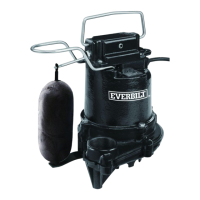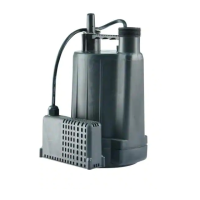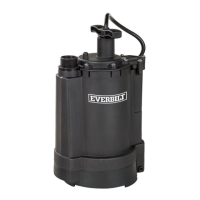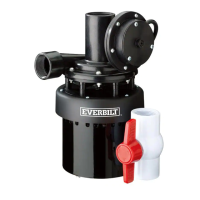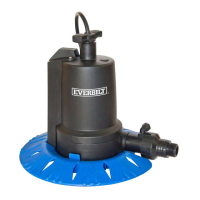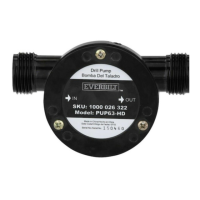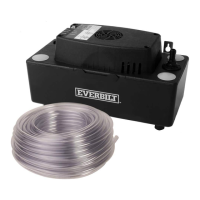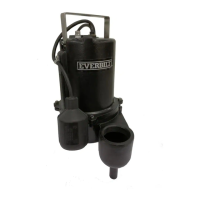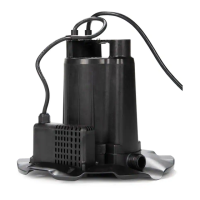8 For Professional Technical Support call 1-844-241-5521
Problem Possible Cause Corrective Action
Motor runs but no water
is discharged
Be sure pump is actually running, not
just humming
See section below called “Motor hums-pump not running”.
Discharge hose or pipe is blocked or
too restrictive
Check hose/pipe for blockages. Check manual for maximum
lengths of pipe/hose that pump can handle. Do not use a hose/pipe
that is narrower than the discharge of the pump itself.
Discharge hose/pipe goes up too high Every pump has a maximum “head” capability, which is the
highest it can lift water. Do not route discharge hose/pipe higher
than the rating on Pg. 2.
Impeller or other internal parts are
worn, damaged, or clogged
Inspect the impeller and volute for wear or breakage. Repair or
rebuild as needed. Check for clogs in the impeller screen and in
the outlet riser (part that extends from volute to outlet).
The pump is non-submersible, make
sure it is primed
Non-submersible utility pumps need to be primed with water
before use. Follow directions in the owners’ manual regarding
priming.
Motor just hums – pump
not running
Impeller is stuck or jammed with
debris
Inspect the impeller area for any debris that may have
entered. Remove as needed.
Make sure impeller rotates freely.
Motor is locked up Check cooling shroud and/or vents in motor case for foreign
objects or for shifting in the case. Remove objects and/or
straighten the motor shroud.
Motor has failed If all items above check out OK, the motor has failed. Replace
pump.
Motor does not run or
make any noise at all
Pump is not getting any power Check outlet where pump is plugged in. Make sure it has power. If
no power check your home’s fuse or circuit breaker panel and
repair as needed.
Pump is not plugged in properly. Ensure pump’s plug is making
good contact in outlet.
Brushes worn out Check and replace brushes.
Pump has overheated from dry running Unplug and wait for at least 30 minutes for using again.
Internal connection or motor has failed If all items above check out OK, the motor has failed. Replace
pump.
The liquid temperatures below 30
degrees F or above 77 degrees F.
Do not operate pump in temperatures as indicated.
Pump runs and moves
water but the quantity of
water is less than it
should be
Discharge hose is restrictive If you are using a hose that is narrower than the pump discharge,
or a long hose, the pump will not be able to discharge water at the
rate for which it was designed. Use a shorter, fatter hose.
Check hose for coils or kinks. Lay hose out straight for best
performance.
Suction hose has an air leak On pumps that use a hose for the suction, it is important that the
hose have air-tight connections. If air can be pulled in through a
hose connection, the pump’s performance will be diminished.
Debris partially blocking intake area Remove debris and ensure intake area is clear for optimum
performance.
Discharge elevation too high The higher the discharge hose goes, the less water the pump can
move. For improved performance the hose should go up too high.
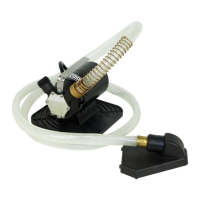
